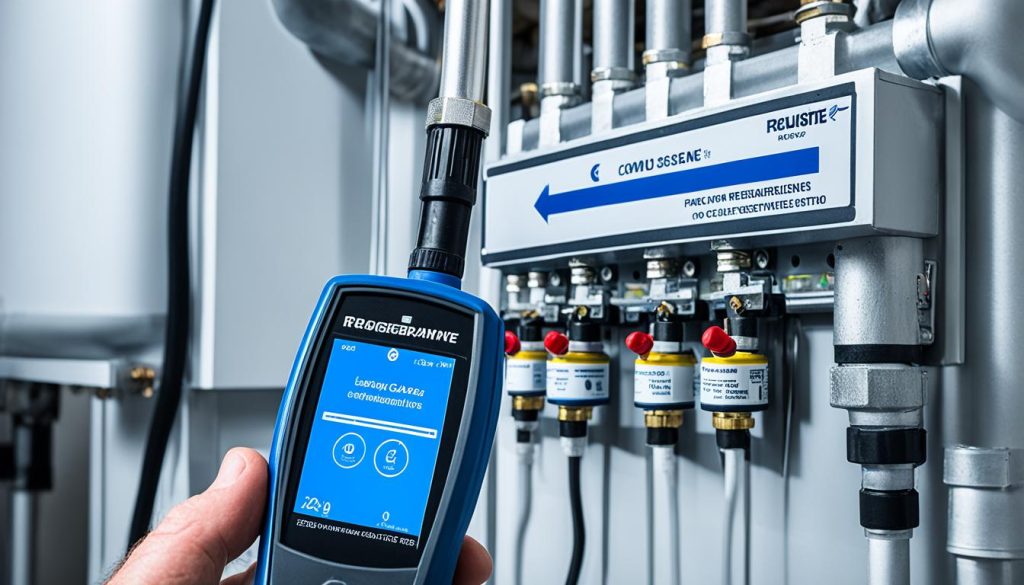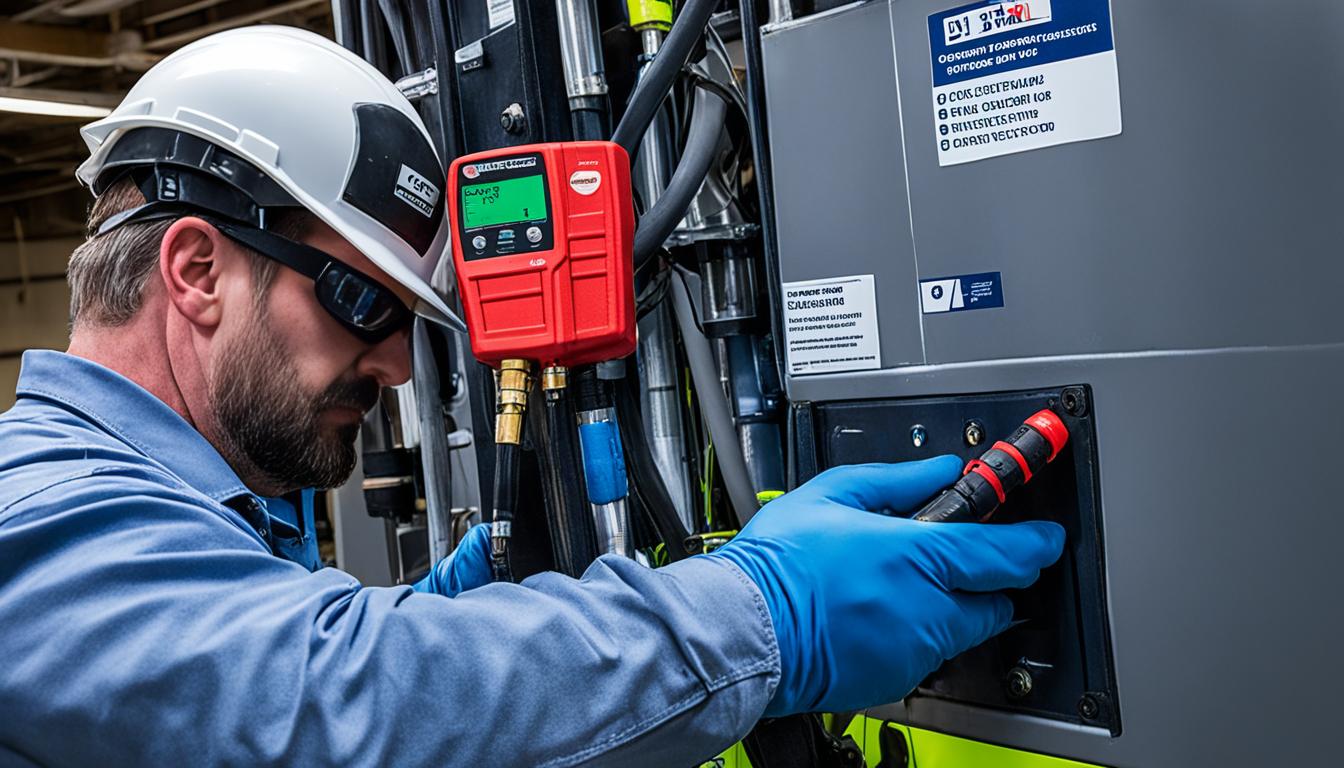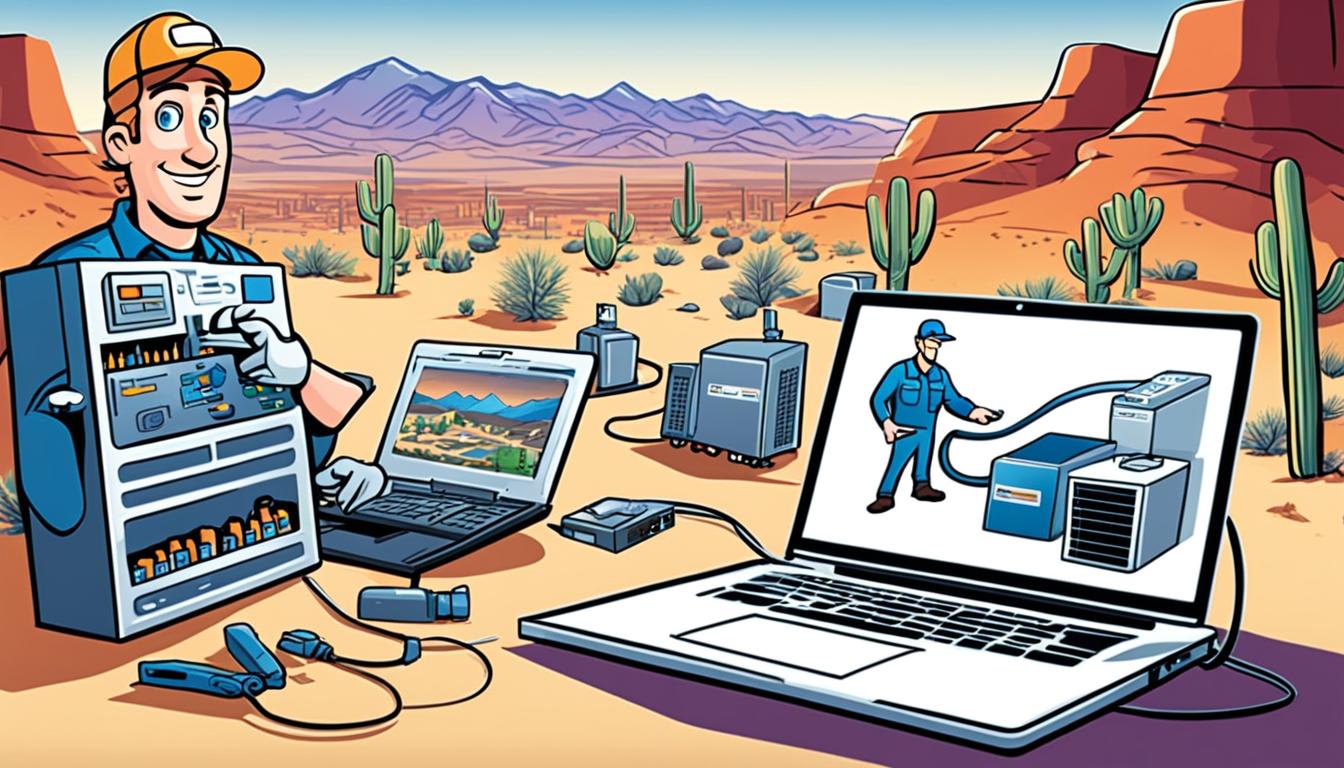As an AC repair contractor, you understand the importance of complying with F Gas Regulations and ensuring the safety and efficiency of your operations. But did you know that leak detection plays a crucial role in meeting these regulations?
Imagine this scenario: It’s a scorching hot summer day, and you receive a call from a frustrated homeowner whose AC system has stopped working. As you step into their sweltering home, you’re greeted with a wave of discomfort and desperation. You know that finding the source of the problem quickly is essential to bring relief to the overheated occupants.
Leak detection is like solving a puzzle. It requires precision, expertise, and the right tools. And when it comes to F Gas Regulations compliance, having reliable leak detection equipment becomes even more critical.
With the ever-evolving regulations and guidelines set forth by regulatory agencies such as the California Air Resources Board (CARB) and the Environmental Protection Agency (EPA), it’s essential for contractors to stay updated and understand how these regulations may impact their leak detection practices.
So, how can contractors ensure they are compliant with F Gas Regulations when using leak detectors? Let’s dive in and explore the key requirements, features, and tips that will help you maintain compliance while improving the performance and profitability of your operations.
Key Takeaways:
- Compliance with F Gas Regulations is crucial for AC repair contractors.
- Leak detection equipment plays a vital role in meeting regulatory requirements.
- Staying updated on the latest regulations and guidelines is essential for compliance.
- Routine inspections and prompt repairs are key to maintaining compliance.
- Considering alternatives to high-GWP refrigerants can contribute to environmental sustainability.
Understanding the F Gas Compliance Requirements
In order to ensure compliance with F Gas Regulations, contractors must understand the specific requirements outlined by regulatory agencies. This includes conducting routine leak inspections and implementing leak detection equipment. According to the EPA, refrigeration equipment owners and operators are required to ensure that a Section 608-certified technician conducts leak inspections, unless the appliances are continuously monitored by an automatic leak detection system that is audited and calibrated annually. By adhering to these requirements, contractors can ensure they are meeting the necessary compliance standards and effectively detecting refrigerant leaks.
| F Gas Compliance Requirements | Actions |
|---|---|
| Routine Leak Inspections | Conduct regular leak inspections on refrigeration equipment. |
| Section 608-Certified Technicians | Ensure that leak inspections are conducted by certified technicians, unless automatic leak detection systems are in place. |
| Automatic Leak Detection Systems | Implement continuously monitored leak detection systems that are audited and calibrated annually. |
By following these requirements, contractors can demonstrate their commitment to environmental responsibility and the safe handling of refrigerants. It is essential to stay up to date with the latest regulations and guidelines to ensure ongoing compliance with F Gas Regulations.
Key Features and Benefits of Leak Detection Equipment

Leak detection equipment plays a crucial role in ensuring compliance with F Gas Regulations and effectively detecting refrigerant leaks. By utilizing advanced gas detectors, contractors can improve their leak detection practices and maintain compliance with F Gas Regulations.
Targeting Nuances of Refrigeration
One of the key features of leak detection equipment is its ability to target the nuances of refrigeration. With a gas library of over 60 refrigerants, these detectors can accurately identify and detect leaks in various refrigeration systems, ensuring comprehensive coverage.
Industry-Leading Detection
Leak detection equipment offers industry-leading detection capabilities, capable of detecting leaks as low as 1 part per million (ppm). This high level of sensitivity allows contractors to identify even the smallest leaks early on, minimizing the risk of environmental damage and equipment malfunction.
Compliance with Safety and Emissions Regulations
Gas detectors comply with refrigeration safety standards and emissions regulations, ensuring that contractors meet the necessary compliance requirements. By using approved leak detection equipment, contractors can demonstrate their commitment to environmental sustainability and safety.
Integration into Building Management Systems
Leak detection equipment can be seamlessly integrated into building management systems, providing real-time monitoring and data analysis. This integration allows contractors to take proactive measures in response to detected leaks, minimizing downtime and optimizing system performance.
State-of-the-Art Diagnostics and Troubleshooting
Modern leak detection equipment is equipped with state-of-the-art diagnostic and troubleshooting capabilities, enabling contractors to quickly identify the cause of leaks and efficiently address them. This helps improve the overall maintenance and reliability of refrigeration systems.
Remote Notification Capabilities
Leak detection equipment often comes with remote notification capabilities, alerting contractors of detected leaks even when they are not on-site. This feature enables contractors to take immediate action, minimizing potential damage and ensuring prompt repairs.
Incorporating leak detection equipment with these key features and benefits allows contractors to enhance their refrigerant leak detection practices, ensuring compliance with F Gas Regulations and promoting a sustainable and efficient operation.
Tips for Maintaining F Gas Regulations Compliance
When it comes to complying with F Gas Regulations and ensuring the safety, efficiency, and environmental sustainability of your operations, there are several key tips and best practices that contractors should follow.
Regularly inspecting and servicing your refrigeration equipment is essential for staying compliant. By conducting routine maintenance checks, you can identify and address any potential issues or leaks before they become bigger problems.
It’s also crucial to ensure that your technicians are properly trained and certified. They should be knowledgeable about F Gas compliance requirements and have the skills to effectively detect and repair refrigerant leaks. Investing in ongoing training and certification programs for your team can help maintain compliance and enhance your leak detection practices.
In addition to regular inspections and technician training, conducting leak inspections as required is a vital part of F Gas compliance. By staying vigilant and promptly addressing any leaks that are detected, you can prevent further environmental damage and minimize costs associated with refrigerant loss.
Keeping accurate records of leak inspections and repairs is another important aspect of compliance. Maintaining detailed documentation not only helps demonstrate your commitment to regulatory standards but also provides a valuable reference for tracking the effectiveness of your leak detection and repair processes over time.
Lastly, considering alternatives to high-GWP refrigerants is a proactive approach to F Gas Regulations compliance. Exploring options such as low-GWP refrigerants or natural refrigerants can help reduce your environmental impact and align with industry trends toward more sustainable practices.
By implementing these tips and maintaining a proactive approach to F Gas Regulations compliance, you can ensure that your operations meet the necessary standards while also minimizing risks and maximizing the efficiency of your refrigeration systems.





0 Comments